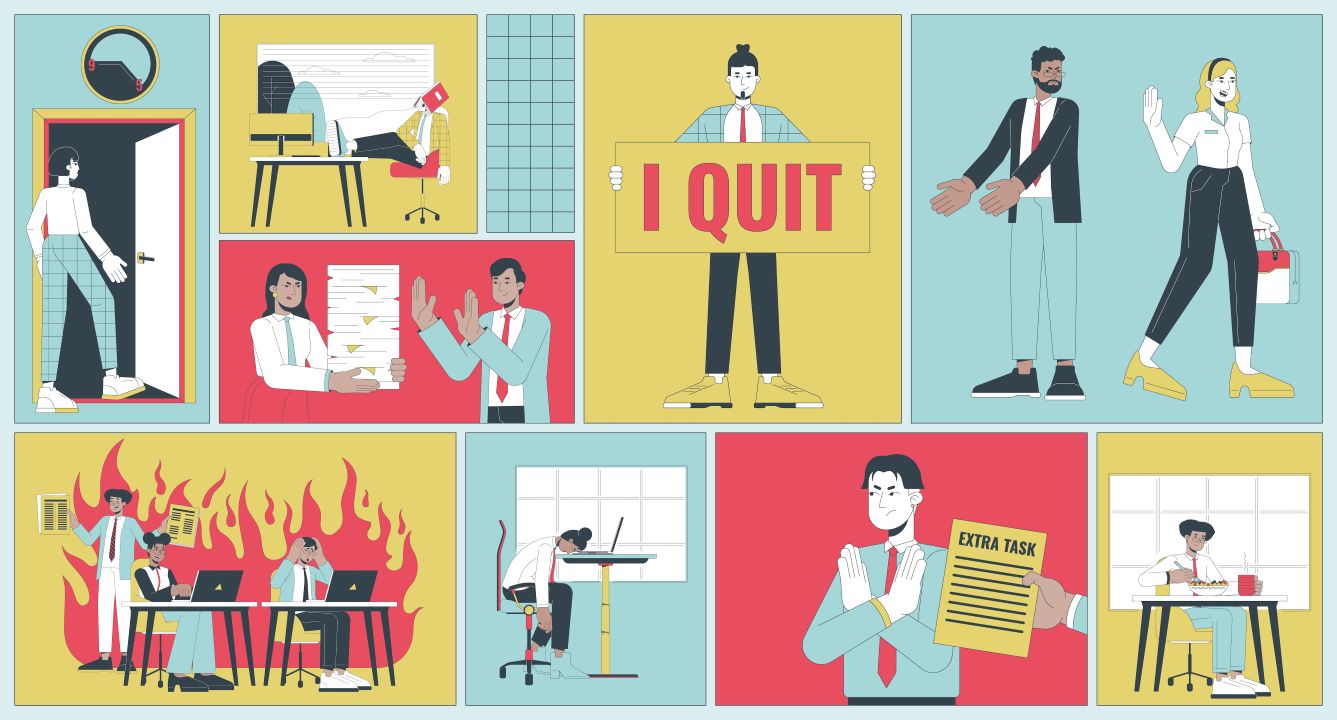Crises of ethics and bad behaviour resemble diseases that can be lethal to even the strongest brands. Leaders need to understand the symptoms – and how to keep company culture healthy.
How many brands could you name that have run into very public problems in recent years? Doubtless quite a few, and the list of wayward company leaders and cultures just keeps growing. FTX, Twitter and Adidas were making the headlines in late 2022 – add them to Boeing, Peloton, Meta, Ryanair, P&O Ferries, Volkswagen, McKinsey, KPMG, Top Shop and more. How is it that much-admired international brands can derail so publicly?
The Adidas example offers a clue. It was exciting to see the firm take swift action in 2022 to sever its relationship with Kanye West after anti-Semitic and other outrageous remarks. However, fixing a problem with an external influencer only tackles half the problem. Within days of the divorce from Kanye, the Financial Times reported that in 2021, Adidas’ own chief sales officer had been issued with a final warning over racist remarks. Despite this serious rebuke he nonetheless received a 26% bonus increase and a contract extension.
The lesson? You can’t just fix outside problems without fixing those inside too. Problems of business ethics and behavior are akin to corporate infections. Leaders need to keep their cultures in good health to prevent such scandals – and be prepared to administer emergency treatment if and when a crisis does blow up.
In good health
It is worth considering examples of companies that have got big decisions right, signalling robustly healthy cultures. These moments rarely make the news – but they could be what separates companies that will prove to have long and healthy corporate lifespans from the rest.
In the UK, we have seen firms like retailer John Lewis, HSBC bank, and telecoms firm Virgin Media O2 provide workers with extra payments to cope with the cost-of-living crisis. Fashion retailer H&M Group decided to stop buying cotton from Xinjiang producers allegedly using Uighur forced labour, and stayed the course, despite organized boycotts of their stores in China. We might also salute Nike for supporting Colin Kaepernick when he took the knee, or even Apple, for its decision to stop giving app developers the ability to use privacy-invading customer cookies.
What might these firms have got right, where others slip up? I look at it in terms of culture, hero worship and echo chambers.
Check your health
The indicators of a corporate infection cluster around a company’s culture, the behavior of leaders and the quality of their decisions processes.
Culture
As my MBA professor Peter Drucker is meant to have said, “culture eats strategy for breakfast.” Given the many ways bad cultures manifest, it’s unsurprising that they infect not just an organization but the wider ecosystem. Signs include the suppression of those who seek to speak truth to power, an absence of psychological safety, bullying, gender pay gaps, discrimination or the tolerance (and sometimes promotion) of ‘bad’ behaviour. You might put Boeing in this category, for deciding to deliver its 737 Max jet to airline customers to meet delivery schedules, despite knowing of the recurring failure of a key system that helps pilots stabilize the plane.
Hero worship
We frequently see businesses where one or more leaders are lauded for their personal charisma, wealth, networks, corporate track record or even ability to communicate with apparent empathy. Some deserve the praise, but sometimes these hero leaders’ values are at odds with doing right by customers, staff, investors or other stakeholders. Witness the decision by Peloton’s (now former) chief executive to ship rusty bikes to consumers – dubbed “Project Tinman” – when it faced stock shortages in 2021. Checking for integrity during the executive selection process is often overlooked.
Echo chambers
Have you ever been in a meeting where you have to decide on a course of action and are presented with a narrow set of options which have already been ‘studied’, resulting in a path being chosen based on limited consultation within or outside the business? You might call this group think, preaching to the choir or an echo chamber; it is comfortable, non-confrontational and self-affirming for leaders. The downside, of course, is the business can end up making decisions that destroy the brand. Seeking divergent thinking is critical for good decision-making.
Investigate, diagnose and treat
Ensuring health across these three areas is essential. Often, treatments and preventative measures are similar (and better to avoid infection in the first place if possible). Three principles stand out. First, when problems arise, treat the infected area. Where leaders misbehave and don’t do the right thing by stakeholders, they must be removed.
Second, monitor your health, through relevant metrics. For example, tools such as Glassdoor provide a measure of your appeal to one of your most important stakeholder groups: your talent. Leaders also need to monitor the ‘pain’ caused by infections, in terms of the levels of media scrutiny and negative stories. You might also track trust in the company and its leaders, internally and externally, as well as measuring customer and employee satisfaction scores.
Third, build – or rebuild – trust by ensuring everyone in the business is motivated and driven by your values and purpose in order to do right by customers, staff, investors, regulators and other interest groups. Sometimes the answer is more humanity, less tech.
Emergency treatment
Strategies to enhance corporate and brand health require leadership commitment over the long-term – but it is also essential to prepare for the potential scenario of a traumatic media or malfeasance event that demands an urgent short-term response.
Have a comms plan
Rehearse now what response you, the top team and any external advisors will offer stakeholders by way of clarifications and explanations, tailored to their specific interests. While there’s no one-size-fits-all script that can be written to cover all eventualities, you can have a clear process ready, to prevent knee-jerk, panic-driven communications.
Have a customer plan
Know what you will do to reassure and retain customers and clients should your business be disrupted by an external shock or a crisis of its own making. There are good lessons to be learned from US carrier Southwest Airlines, which cancelled hundreds of flights over the 2022 holiday season, leaving thousands of customers stranded at airports and missing Christmas with their families. Offering air miles loaded with terms and conditions did not do the job of rebuilding trust. If anything, err on the side of generosity.
Act fast
Silence is a vacuum that will be filled with conspiracy theories and misattributions. Be ready to act fast by ensuring clarity about where responsibilities lie – be it for meeting the media, soothing shareholders or engaging employees. Prepare by using a RACI matrix to identify who’s Responsible and Accountable, and who needs to be Consulted or Informed, about crisis decisions.
Bad business can be deeply expensive – sometimes fatal – for even the biggest brands. Make it a priority to prevent infection – and if you are unfortunate enough to face a crisis, respond with openness, planning and speed.




